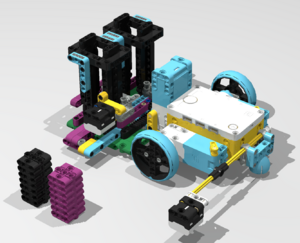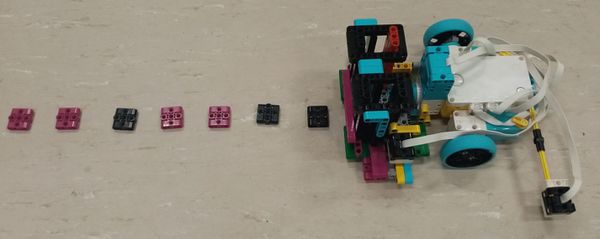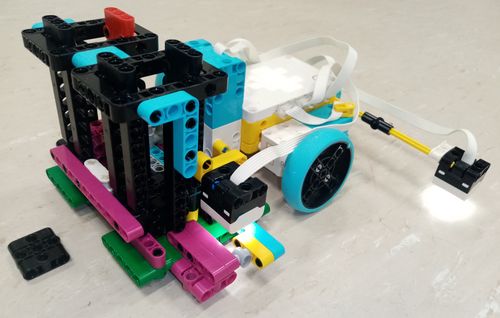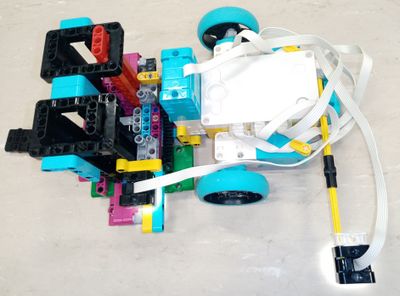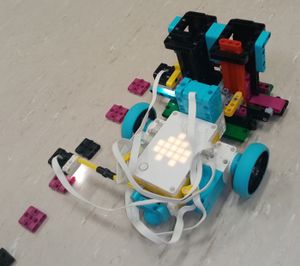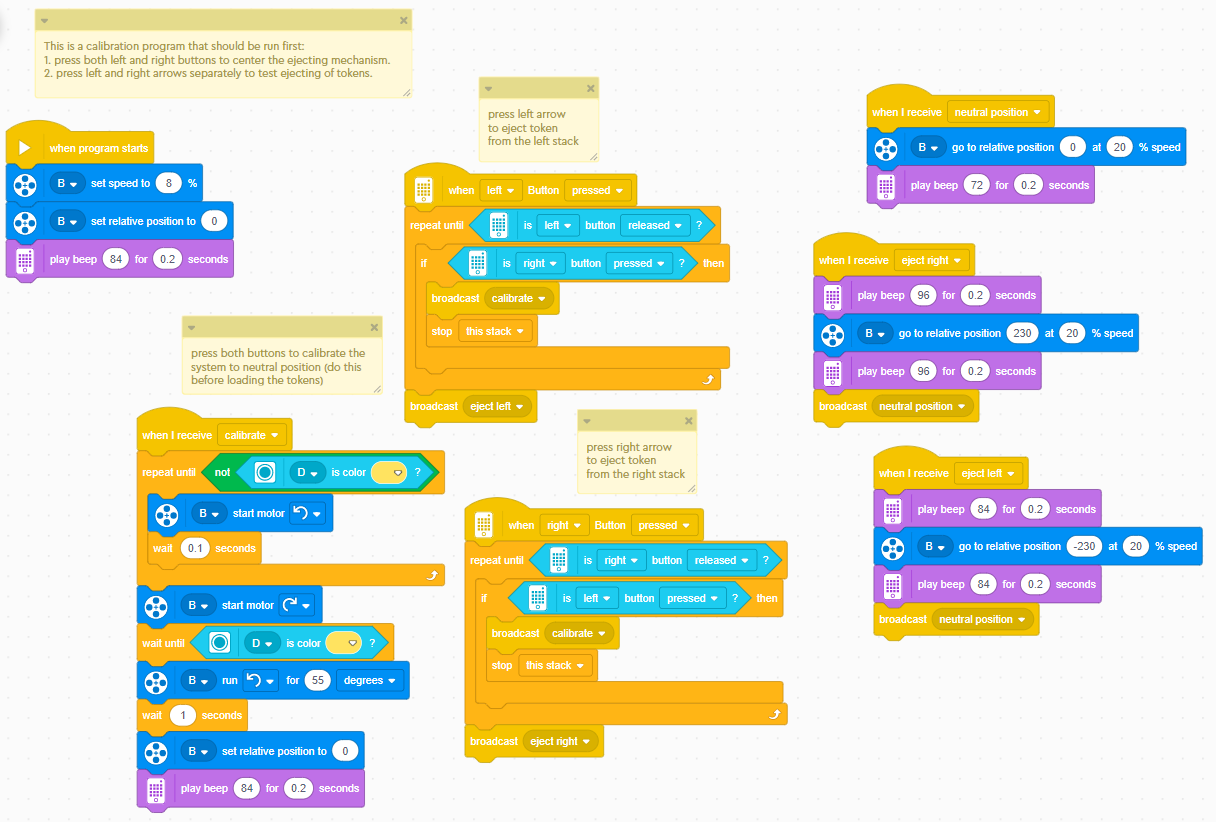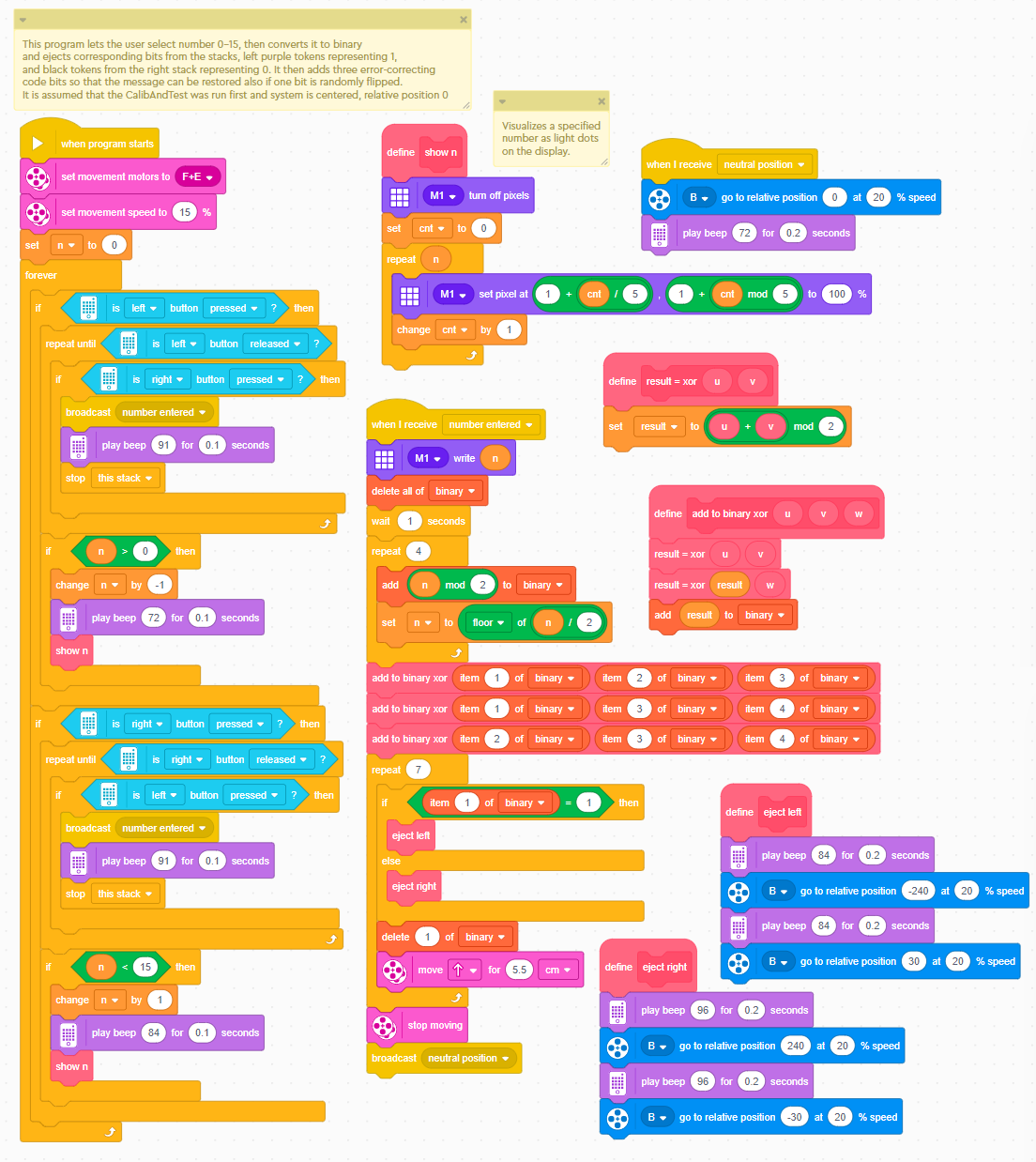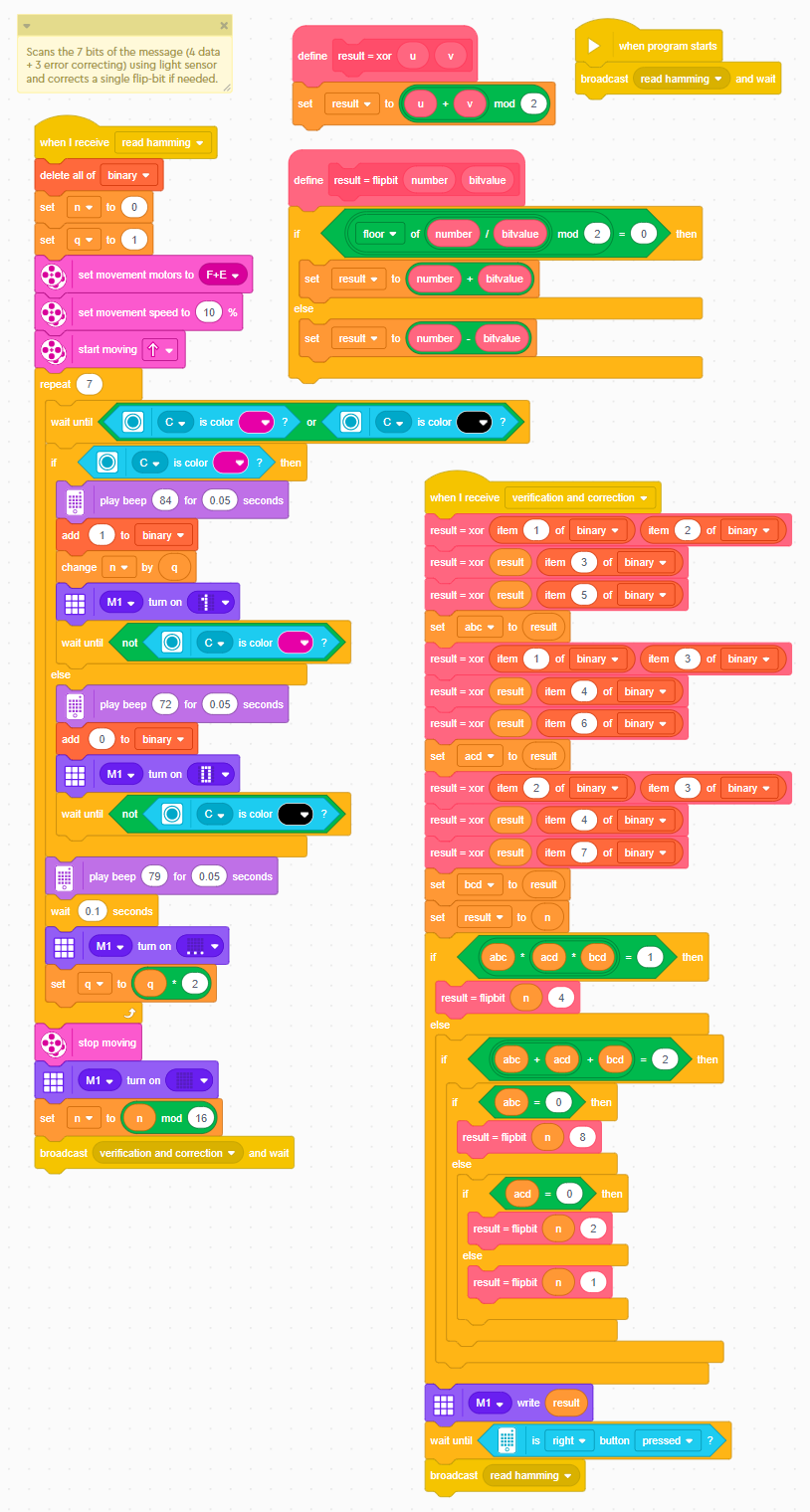Spike Prime - Self-correcting Codes
From RoboWiki
Revision as of 11:57, 16 July 2022 by Robot (talk | contribs) (Created page with "<small>(''back to list of projects'')</small> == Let's begin == Self correcting codes... == Build == Model: Image:self_correc...")
Let's begin
Self correcting codes...
Build
Model:
Pictures:
Building instructions:
Download building instructions:
Download stud.io model:
...description...
Connections:
- left motor - E
- right motor - F
- large motor - B
- calibration light sensor - D
- reading light sensor - C
Programs
Calibration and testiing:
Writing self-correcting code:
Reading self-correcting code:
Download:
...description...
Measure, analyze, think
- Make your own recording
- Perform experiments with your model and discuss in your group what has happened.
Explore and modify
- Think about how a message can be written so that even after flipping any little bit of it, the message could still be safely read without any disturbance.
- Three methods for students to discover:
- write every bit 3 times (message length = 3 x L)
- write every bit two times and add one extra bit - parity of ones in the message (message length = 2 x L + 1)
- write current parity after every single bit (message length = 2 x L)
- invent your own method, try to use as little bits as possible
Present
- How would you encode the message using tokens of only one color?
- How could a distance traveled between tokens placed be also used for encoding the message?
- How would the situation change, if one bit could be flipped in every 10 bits that we send instead of in the whole message?
- Prepare a short presentation for other groups. Tell others about your experiments with finding circle centers.
Additional resources
- Download: Circle - all media files
